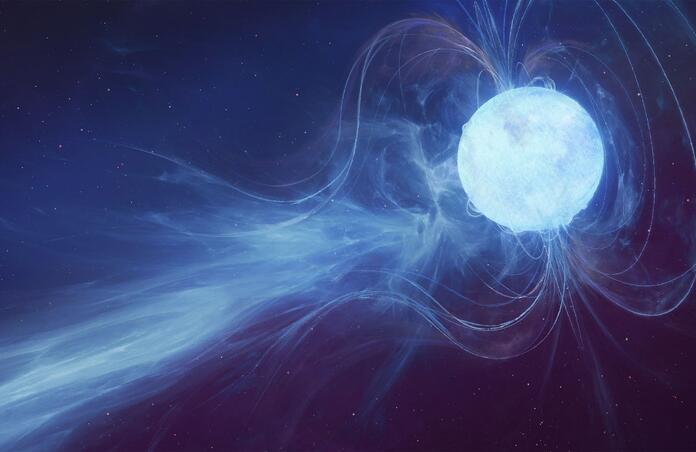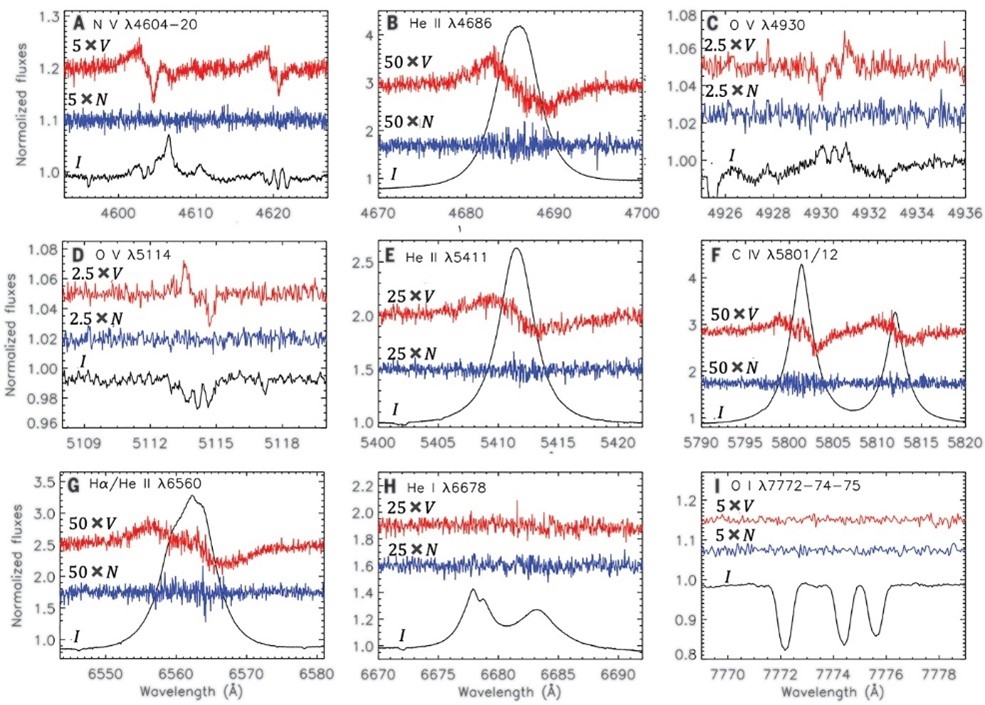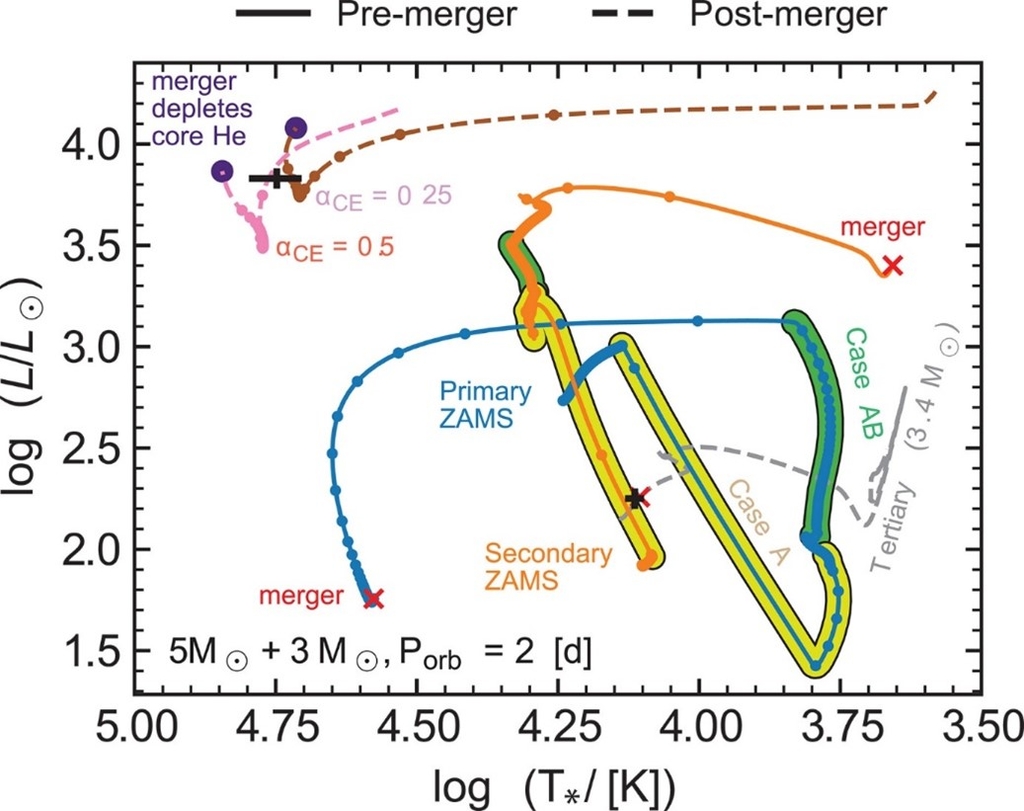Wolf-Rayet Stars as Magnetar Progenitors

Magnetars are a special class of neutron stars, which are characterised by their extraordinarily potent magnetic fields, some of the strongest known in the universe. Their origins remain subject of extensive research and speculation. One theory postulates that these formidable fields may have their roots in the type of stars that precede the supernova events leading to magnetars.
In a recent study, Shenar et al. bring to light a pivotal connection between magnetars and Wolf-Rayet (WR) stars. Massive stars undergoing late hydrogen, helium or advanced burning may be subject to intense stellar winds, allowing the outer layers of the star to be shed, exposing their cores, and entering the WR phase. Such stars typically have spectra dominated by emission lines. By identifying a significant magnetic field in HD 45166, a binary system with a WR star, the researchers suggest that such stars might be precursors to the formation of magnetars.
In February 2022, the team gathered data using the Canada France Hawaii telescope, as well as relying on archival data taken from the La Silla telescope in Chile. They made use of the High-Resolution Mercator Echelle Spectrograph (HERMES) to investigate the spectrum between 3770 and 9000 Å. The magnetic field of the WR star in the HD 45166 binary system could be identified by measuring the separation of spectrum lines due to the Zeeman effect, discovering a mean magnetic field strength of (43.0±2.5) kG.

Based on this, and other stellar parameters derived in the paper, as well as under the assumption that the WR component of HD 45166 will continue to evolve towards a supernova collapse, the team applied principles of magnetic flux conservation to estimate the magnetic field strength of the neutron star that will remain. With a stellar radius of 0.88±0.16R⊙ and an expected final radius of 12km, standard for many neutron stars, the final field would be (1.11x1014±0.42) G, which would classify the star as a magnetar, which will have field in the order of 1014G.
As part of their findings, the team recalculated the mass of the star to be 2.03±0.44M⊙. They discuss that the issue here is that the previously described evolutionary model would not fit the mechanism by which this WR star came to be, since this core is too light. While the mass needed to become a WR star is still an area of contention, the consensus is that only massive stars ranging from 20 – 60 M⊙ can do so. Meanwhile, the progenitor to the WR component of HD 45166 however, would only have a mass of ~10 M⊙. In response, the team model a previous three body system, composed of a tightly bound binary and a distant tertiary member. In simulations, they found that given appropriate starting parameters, they were able to reproduce the HD 45166 in its present state. However, it is yet unclear how or if this unique formation mechanism has contributed to the observed magnetic field.

The study provides strong evidence linking WR stars with pronounced magnetic fields to magnetar origins. The proposed evolutionary scenario of HD 45166 is consistent with its observed properties, suggesting that the merger of two lower-mass helium stars could have led to the emergence of a magnetic field in the Wolf-Rayet component. While the exact formation of HD 45166 is still under discussion, its closeness to Earth indicates the possibility of finding more magnetized helium stars that can further support this research.
--
Journal Source: T. Shenar et al, A massive helium star with a sufficiently strong magnetic field to form a magnetar, Science, Vol. 381, No. 6659, DOI: 10.1126/science.ade3293, 2023
Cover Image: Maciej Rebisz
